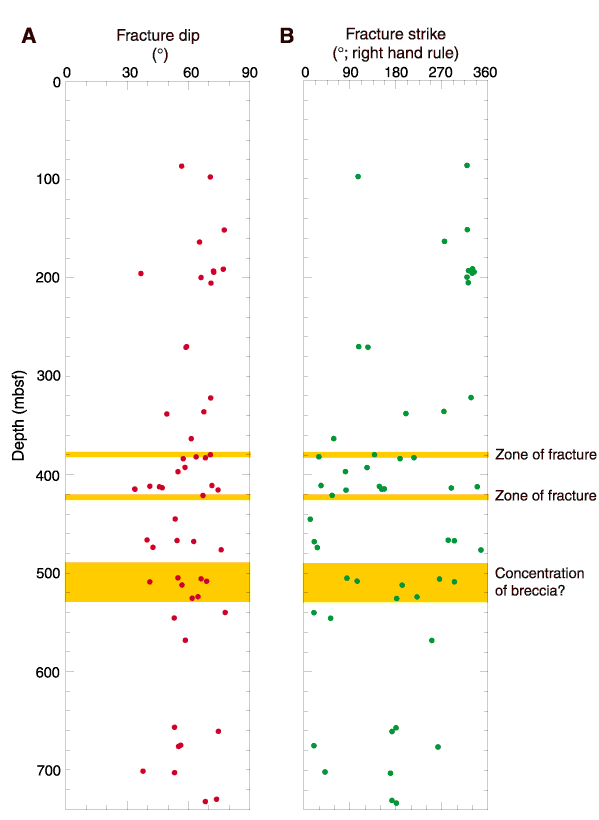ODP Leg 196: Deformation and Fluid Flow Processes in the Nankai Trough Accretionary Prism
Figure 6.
Fracture (A) dip and (B) strike from resistivity-at-the-bit image interpretation. Fracture strike is plotted so that the dip direction is 90o counterclockwise from the strike. An increase in fractures occurs between 380 and 520 mbsf. Orientations appear to be randomly distributed. Note the two zones of fracturing (378-384 and 410-417 mbsf) and the zone of high-resistivity bands (~500 mbsf) associated with intensive deformation, possibly brecciation. The shallower zone of fracturing (378-384 mbsf) may correlate with a fractured zone recorded in the cores of Leg 190 Hole 1173A (382-384 mbsf) but the deeper zone has no such correlation. A steeply dipping fracture would not be expected to correlate at the same depth between two holes spaced 50 m apart, unless it represented part of a subhorizontal zone of high-angle fractures.
